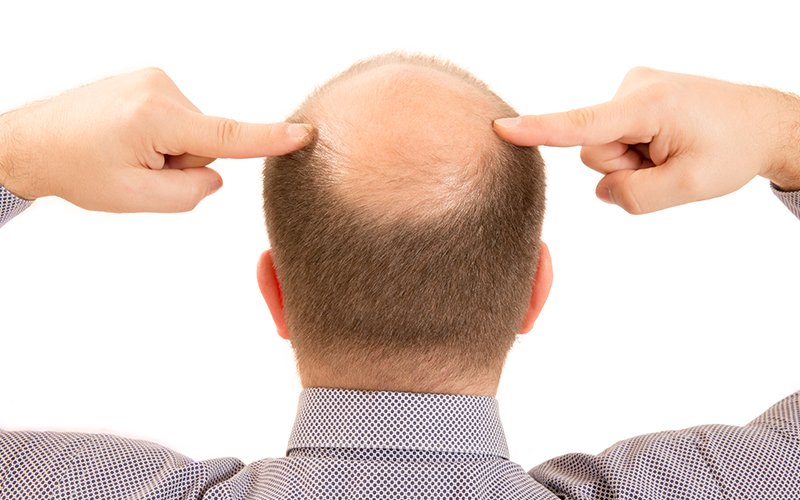 Male pattern baldness, or androgenetic alopecia, accounts for more than 90% of all hair loss in men, and some 25% of men begin seeing symptoms as early as their 20s.
Male pattern baldness, or androgenetic alopecia, accounts for more than 90% of all hair loss in men, and some 25% of men begin seeing symptoms as early as their 20s.
Unlike other causes of thinning hair and baldness, male pattern baldness is characterized by a distinct pattern of receding hair at the front of the hairline, temples and crown. The Norwood Scale is used to measure how far an individual’s male pattern baldness has progressed.
How does your balding compare with actual photos of the stages of the Norwood Scale?
The Norwood Scale
The Norwood Scale has seven stages, which range from no hair loss at all to extensive or complete baldness.
Stage 1: The first stage of the scale represents a baseline of no hair loss.

Stage 2: At this stage, there is minor recession at the front of the hairline and some recession at the temples. When the recession progresses across the entire frontal hairline, this is referred to as Stage 2A.

Stage 3: Hair recession at the temples begins to deepen at this stage. During Stage 3A, frontal recession also deepens, and the hairline continues to move backwards. When there is also hair loss evident on the crown, this is classified as Stage 3V.

Stage 4: Frontal and temporal hair loss progresses, and the bald patch on the crown enlarges. When hair loss progresses past mid crown, it is considered Stage 4A.

Stage 5: At this stage, the bald area in front gets larger and begins to join the bald area at the crown.

Stage 6: The bald area in front and the bald area at the crown fuse and continue to get bigger. The back part of the bald area is wider than at Stage 5.

Stage 7: At the final stage, there is extensive baldness with only a strip of hair remaining at the back and sides of the scalp. For some men, this stage can include total baldness.

Male pattern baldness is a genetic condition that is triggered by the male hormone dihydrotestosterone (DHT), a byproduct of testosterone. Some men’s hair follicles are more sensitive to DHT, and continued exposure causes the follicles to shrink and stop producing hair. Your family physician, dermatologist or a medical hair loss expert can diagnose male pattern baldness.
The good news is that DHT exposure to the hair follicles can be slowed or even stopped in some cases with early medical intervention. Hair restoration technology has also greatly advanced, with revolutionary nonsurgical treatment options that can replace lost hair and provide natural-looking, permanent results.
To learn more about male pattern baldness, where you currently stand on the Norwood Scale and the treatment options available to restore your natural hair, contact Dallas NeoGraft today.



